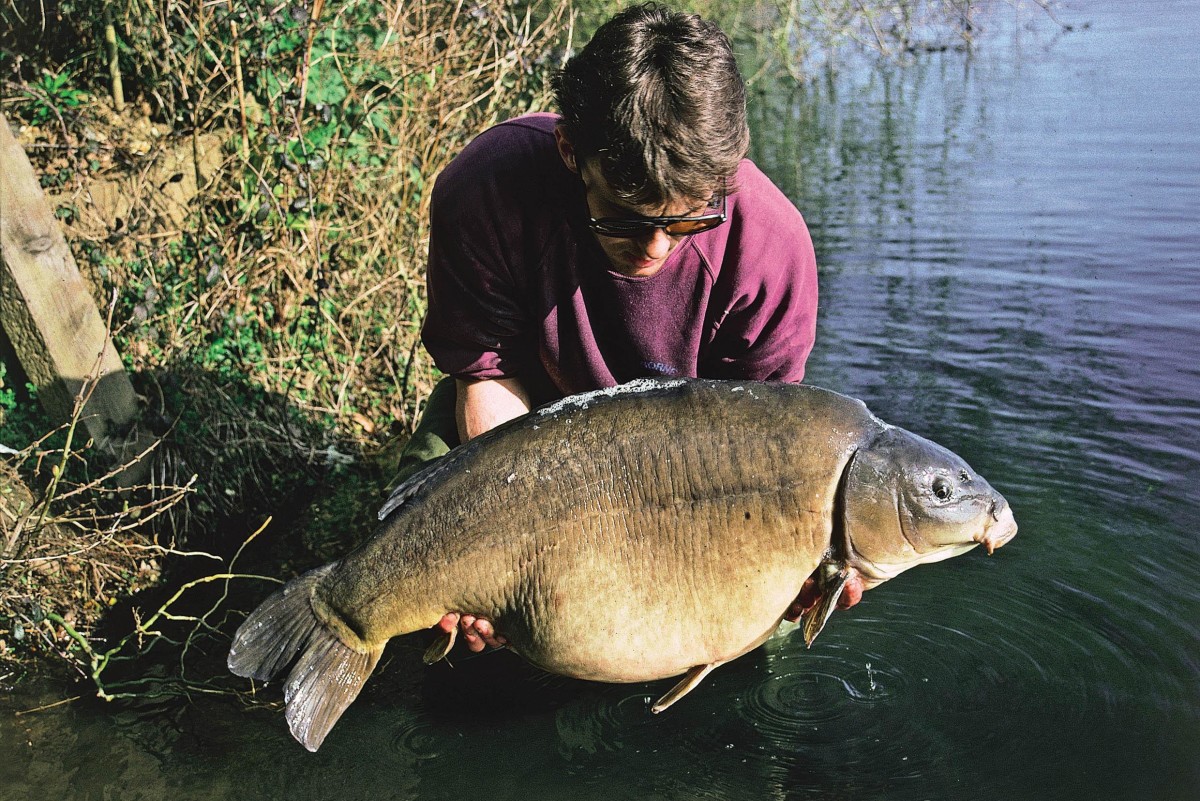
Why Are There So Few Leather Carp?
Our resident fish biologist, Simon Scott, explains why there are so few swimming around our lakes and river system...
What’s in a name?
The scale pattern of a carp can be its most endearing feature, but those known affectionately as Single Scale, Scale on the Shoulder, and of course, Heather the Leather, can thank Mother Nature, rather than their appreciative captors for the names they’ve been given. The carp we fish for today originated from the Caspian Sea region. Lean and torpedo-shaped, they were covered in uniform scales. As an important food source, they were transported across Europe. Improved farming techniques brought about faster growth rates, and given the large number of fish reared, individual carp were produced that exhibited unusual traits. Such traits can often prove a reproductive advantage.
How so?
This is the cornerstone of evolution. It allows all species to evolve as their environment suits. Species that breed quickly and produce large numbers of offspring evolve rapidly. Whilst the original carp from the Caspian Sea area continued to exhibited their same scale pattern, fry were produced elsewhere that bore no resemblance to their ancestors. Some had a reduced covering of scales. Those they did have were disproportionately large. This facilitated easier preparation for the table. Through what’s known as true breeding, offspring bred together exhibited the same ‘mirror’ scaling. Farming development also produced ‘line’ scaling (linears) and ‘nude’ carp (leathers). The size and distribution of scales of all varieties is controlled by
two genes.
That was all fairly simple and straightforward…
It was just a basic guide to carp genetics. As a carp farmer, I can predict scale patterns with some accuracy. When customers come to collect their fish and we discuss scale patterns, the conversation often turns to leather carp, and my Twitter feed (@sscottfish) often reflects as much.
When does a mirror become a leather, then?
Leather, nude and naked carp were terms applied to variants of the common carp (Cyprinus carpio). They were used by carp geneticists long before the rise in popularity of our sport, and as an understanding of genetics was established, the code for each pattern was published:
Appearance of the Carp Genetic code
Common carp S,nn or Ss,nn
Mirror common ss,nn
Zip linear SS,Nn or Ss,Nn
Leather ss,Nn
The term ‘leather’ applies to a certain genetic code, rather than a carp that has no scales.
So how do you know what’s in your landing net?
In very rare cases, leather carp will have no scales at all. Usually, they have a few, although distribution will be limited. One or two large scales might appear on their tail wrist, and more below their dorsal fin. Scales directly behind their gill plates are rare, but they’re a feature of mirror carp. Their dorsal fins can be punctuated, the bony rays being over-spaced in the mid-section. The anal fin is the real giveaway, however. That of a leather carp comprises three or four rays (average is 3.56), and can appear withered. A mirror carp’s usually has five or six, and will appear fully formed.
What about those teeth?
They have two fewer pharyngeal (throat) teeth than their heavily scaled relatives, so they’re unable to crush the shells of snails or mussels. Their stomach enzymes will not be able to break down these items as efficiently as they might, and valuable nutrients will pass through the fish as a result—even in optimal conditions, poor growth data reflects as much. Leather carp also have a reduced capability to regrow damaged tissue.
Genetically, then, they’re on the back foot?
Indeed. If a common carp loses part of its tail, it has the ability to regenerate its lost fin. After a year or two, it will have completely reformed. Not so with the poor old leather carp… at best, they’ll manage a meagre 20 per cent, which is why they often have unusual, easily recognisable fins, rather than powerful,
table tennis bat-shaped paddles.
Anything else that holds them back?
They have fewer white blood cells than commons and mirrors, and are less efficient at distributing oxygen around their bodies, so they’re less able to fight disease. During periods of low oxygen, when diseases can be prevalent, they’re far more likely to perish—their survival rates are only half as good as those of commons and mirrors. Despite their supposed faults, they add variety to my stock and my customers often like one in their orders… and if they find their way into the right lake, they can grow absolutely huge!
Want more carp fishing content? Watch videos on our CARPologyTV channel 𝗛𝗲𝗿𝗲 ➡️ http://bit.ly/3tKMIup




